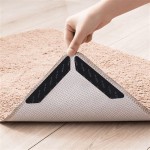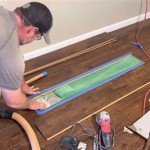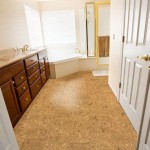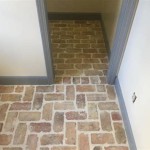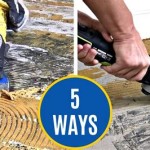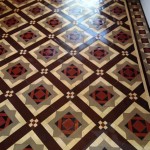Essential Aspects of Flooring for Your Yoga Studio
The flooring of your yoga studio plays a crucial role in creating a harmonious and supportive space for your practitioners. Whether you're designing a new studio or renovating an existing one, choosing the right flooring is essential for ensuring comfort, safety, and longevity.
Factors to Consider When Choosing Flooring
Several key factors should be taken into consideration when selecting flooring for your yoga studio:
- Comfort:
- Safety:
- Durability:
- Ease of Maintenance:
- Appearance:
Your flooring should provide a comfortable surface for yoga poses, supporting joints and cushioning impact.
Choose flooring with good traction to prevent slips and falls, particularly during wet or sweaty practices.
The flooring should withstand the wear and tear of regular yoga classes, including mats, foot traffic, and occasional spills.
Consider flooring that is easy to clean and disinfect, ensuring a hygienic and sanitary environment for your practitioners.
The flooring should complement the overall design and ambiance of your studio, creating a welcoming and inspiring space.
Types of Flooring for Yoga Studios
There are several types of flooring suitable for yoga studios, each with its unique advantages and disadvantages:
- Rubber Flooring:
- Cork Flooring:
- Laminate Flooring:
- Bamboo Flooring:
- Epoxy Flooring:
Rubber flooring is a popular choice due to its durability, comfort, and sound absorption. It is available in various thicknesses and textures, providing options for different levels of support and traction.
Cork flooring is a natural and sustainable option that offers excellent insulation and shock absorption. It is also hypoallergenic and resistant to moisture, making it a good choice for studios with increased humidity.
Laminate flooring is a cost-effective option that mimics the look of hardwood. It is durable and easy to clean, but it can be slippery when wet and may not provide the same level of comfort as other flooring types.
Bamboo flooring is a strong and eco-friendly alternative to hardwood. It is naturally antibacterial and moisture-resistant, making it a suitable choice for studios with humid conditions.
Epoxy flooring is a durable and versatile option that can be customized with different colors and textures. It is easy to clean and maintain but can be hard on joints and may not provide sufficient cushioning for yoga poses.
Installation and Maintenance
Proper installation and maintenance are essential for the longevity and performance of your yoga studio flooring. Ensure that the flooring is installed by experienced professionals following the manufacturer's guidelines. Regular cleaning and maintenance will help keep your flooring in optimal condition, preventing wear and tear and ensuring a safe and comfortable practice space for your students.
Conclusion
Choosing the right flooring for your yoga studio is a crucial decision that affects the comfort, safety, and overall ambiance of your space. By considering the factors discussed above and carefully evaluating the different flooring options available, you can create a supportive and inspiring environment for your yoga practitioners to thrive and grow.

Yoga Studio Flooring Best Options Cost Installation Studiogrowth

Top 5 Best Home And Studio Yoga Flooring

Yoga Studio Flooring Best Options Cost Installation Studiogrowth

Blog Decorating A Yoga Studio

Zebra Yoga Tiles Elevate Your Studio With Premium Flooring Solution

38 Inspiring Yoga Studio Design Ideas And Tips Photos

Best Yoga Studio Interior Design Ideas For New Owners

Yoga Studio Flooring Best Options Cost Installation Studiogrowth

38 Inspiring Yoga Studio Design Ideas And Tips Photos

Cork Flooring Multitalented Enough As Gym Icork Floor Best Yoga
See Also
